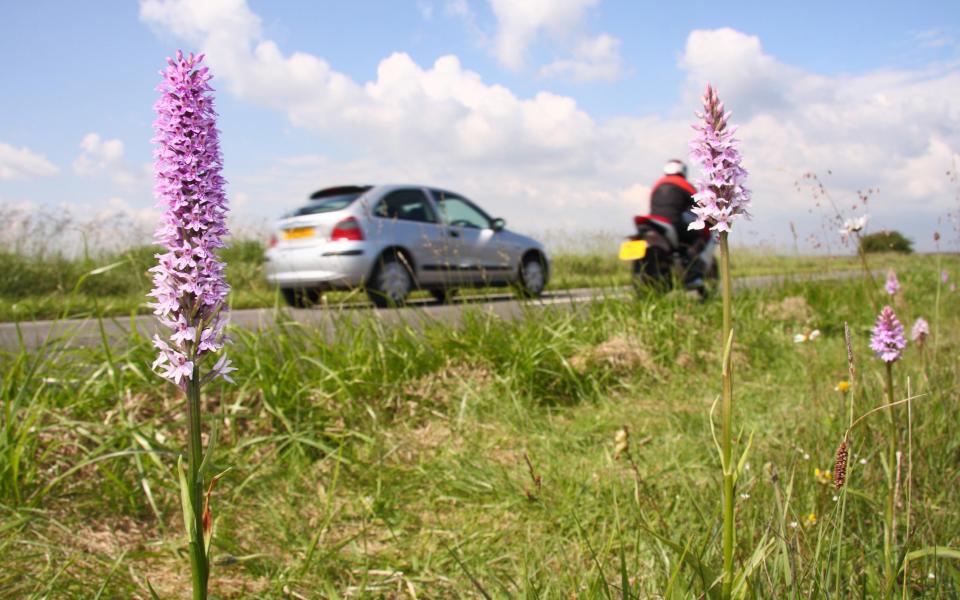Wildflower verges to be created on all new major English roads

All new major roads will have wildflower-friendly verges which could boost the numbers of birds and bees, Highways England has said.
Vibrant road verges will be created as standard on new roads over 300 miles in England, using low nutrient soils, which will be seeded with wildflowers or left to grow naturally.
More than 97 per cent of meadows have been destroyed since the 1930s amid the intensification of agriculture, making the 238,000 hectares of road verges across the UK a vital habitat for pollinators.
NGO Plantlife, which has been calling for wildflower verges to be standard on new roads, says roadside ‘mini-meadows’ are a refuge for many wild flower species, as well as reducing air pollution and providing corridors for wildlife to move.
Wildflowers favour low nutrient soils, which can stop them being crowded out by ‘bullying’ plant species such as aggressive grasses, dock and nettle.
The Government has pledged to build 4,000 miles of new road by 2025, which could mean substantial new habitats for wildflowers such as harebells, bird’s-foot-trefoil and kidney vetch.
Highways England says it will also revise its approach to mowing on verges to better protect wildlife, and hopes to eventually extend wildflower friendly habitats across pre-existing roads.
Plantlife says verges are often cut too frequently or at the wrong time. Council staff shortages during Covid-19 may have been good for wildlife as many verges have gone untended.
Clare Warburton, Natural England's Green Infrastructure Principal Advisor, said: “This is a step change in the way road verges are designed and managed, and could make a significant contribution to recovering nature on our verges.”
The new policy follows a successful pilot project by Dorset Council on the Weymouth Relief Road, where wide chalk cuttings were left bare, with minimal top soil, seeded with wildflowers.
The verges are now supporting over 140 plant species and 30 species of butterflies and in the 10 years since construction. Meanwhile they have required little to no maintenance.
Dr Kate Petty, Plantlife’s Road Verge Campaign Manager, said: “Our research shows that nearly half of our entire flora grows on our verges, making this an exceptionally important habitat for wildlife, which needs all the help it can get."

